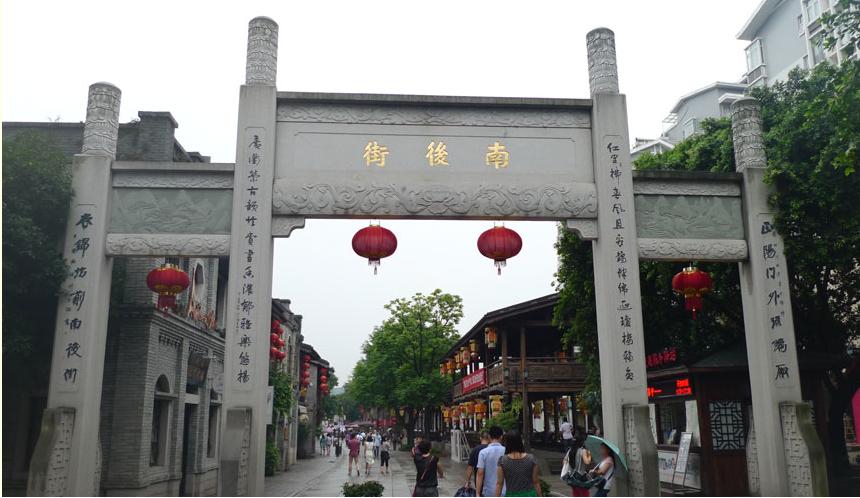| Home > Living In China |
Fuzhou impression: three alleys and seven lanes
Construction of the 40-hectare block began during the Jin Dynasty and was completed in Tang Dynasty. The Three Alleys and Seven Lanes reached its greatest prosperity in Ming and Qing dynasties. True to its name, the block consists of three alleys, seven lanes and an axis street. The three alleys are Yijin Alley, Wenru Alley and Guanglu Alley, and the seven lanes are Yangqiao Lane, Langguan Lane, Ta Lane, Huang Lane, Anmin Lane, Gong Lane and Jibi Lane. The South Backstreet Memorial Arch marks the axis of Fuzhou. "Lanes" are referred to differently, depending on which region of China you are visiting. For example, "Xiao Jie Dao" means "little street," while "Hu Tong", "Nong Tang" and "Zhai Dao" all roughly mean "narrow pathway." All these names have originated from the Chinese people's daily lives. Though lanes in Fuzhou do not zigzag as those of southern China's waterside towns, they boast a profound cultural history. Over 100 great figures throughout China's modern history came from these lanes: Lin Zexu (the famous official of late Qing Dynasty), Shen Baozhen (the father of ship administration), Yan Fu (the great thinker), Lin Xu (one of the six members of the Hundred Days' Reform), Lin Juemin (the hero of the Huanghuagang Uprising), Bingxin (the famous female writer) and Deng Tuo (the famous writer).
The three alleys are Yijin Alley, Wenru Alley and Guanglu Alley, and the seven lanes are Yangqiao Lane, Langguan Lane, Ta Lane, Huang Lane, Anmin Lane, Gong Lane anad Jibi Lane. The South Backstreet Memorial Arch marks the axis of Fuzhou. [Photo: CRIENGLISH.com]
Centrally located in the city of Fuzhou, the Three Alleys and Seven Lanes is a well-known historical and cultural block.
Custom
 more
moreWeb Dictionary
University
Zhuhai College of Jilin University
Huaibei Normal University
Beijing Information Science and Technology Unive...
Primary&secondary
Beijing No.9 Middle School
Wanjie zhaoyang School
The High School Affiliated to Renmin University ...
Language school
Beijing International Chinese College
Provide more comprehensive, professional and convenient services for...
Northeast Yucai Education Group
A public school providing primary education ranging from grade one o...
Guangdong Overseas Chinese Vocational School
The Chinese Educational Base, a foreign-oriented public institution....
Hobby School
Shaolin Temple South-and-North martial arts coll...
Established and developed by thirty-four generations of martial arts...
China Times
Its main undertakings include TCFL Training, TCFL Teacher Internatio...
Chopsticks Cooking Centre
Subjects include Chinese dishes from different regions, dim sums, lo...





 print
print  email
email  Favorite
Favorite  Transtlate
Transtlate 








